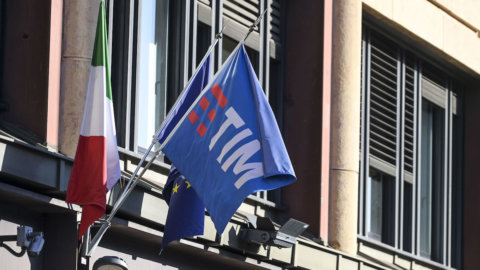Tim, Ericsson e Comau they experiment with innovative solutions for Industry 4.0 e smart manufacturing. Thanks to the creation of a network 5G at the Comau headquarters in Turin, three new applications were fielded to demonstrate the advantages of the new technology in an industrial environment, in particular those deriving from the network slicing functionality. The initiative is part of the 5Growth project – launched in 2019 – funded by theXNUMX-XNUMX business days aimed at developing 5G solutions capable of meeting the stringent requirements of important vertical sectors such as Industry 4.0, Transport, Energy, following an approach based on field experimentation.
5G and Network Slice: the efficient and secure network for companies
But what are the "Network Slices”? Virtual logical network portions of 5G, which support different application cases with particular characteristics and requirements. The same 5G physical network can therefore have multiple slices, each dedicated to specific services or customers, thus offering greater flexibility, efficient use of network resources and greater opportunities for companies which in turn can use differentiated services with specific speed requirements , latency and reliability.
“We can guarantee the development of new services and new networks that can be configured with a high level of security in real time to create customized business scenarios such as those related to Industry 4.0 – he declared Daniel Franceschini, Head of Innovation at Tim –. Thanks to our skills, we will contribute to digitization, providing solutions that improve the production processes of companies and the Public Administration".
This is a new automation paradigm, which “involves the use of external sensors to detect parameters within automated production contexts and to collect the data detected in a central “brain” in real time. The information collected is used to automatically define and optimize the tasks that the machines have to perform flexibly and efficiently,” he explained Alessandro Piscioneri, Digital Solutions and Services Segment Leader.
Alessandro Pane, Research and Development Director, Ericsson in Italy, added: “Network slicing will play a crucial role in the creation of innovative services, accelerating the digital transformation of all enterprises that will thus be able to create new use cases for different industrial sectors and exploit new market opportunities.”
The three applications of the new technology
Il the first case of use object of the experimentation concerned the movement of a robot which, through a very low latency radio link, produces a digital replica where the movement of the mechanical robot and the respective virtual renderings are perfectly synchronized. Furthermore, thanks to the constant updating of the central system, it is possible to decide the best production process based on the working parameters.
Il second case it relates to the real-time monitoring of industrial assets; data is acquired from various sensors and sent to an application that uses it to improve the planning of predictive maintenance interventions, production processes and quality. By integrating with Comau's digital platform “in.Grid”any deviation from normal operation can be effectively and promptly recognized. Likewise, remote assistance and access to cloud-based resources, such as high definition video etcreal-time connections with devices of augmented reality, greatly reduce repair times in the event of a breakdown.
Il third case involved the application of immersive telepresence in an advanced remote assistance scenario, in which the maintenance personnel present on site are remotely assisted by an expert, in order to resolve a fault, using both augmented reality (AR) and digital tutorials . Thanks to the high bandwidth capacity of the 5G, it is in fact possible for the operator to share what he sees in real time with remote experts, with benefits in terms of timing and costs.




